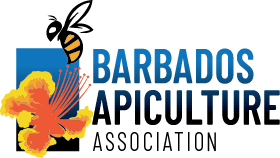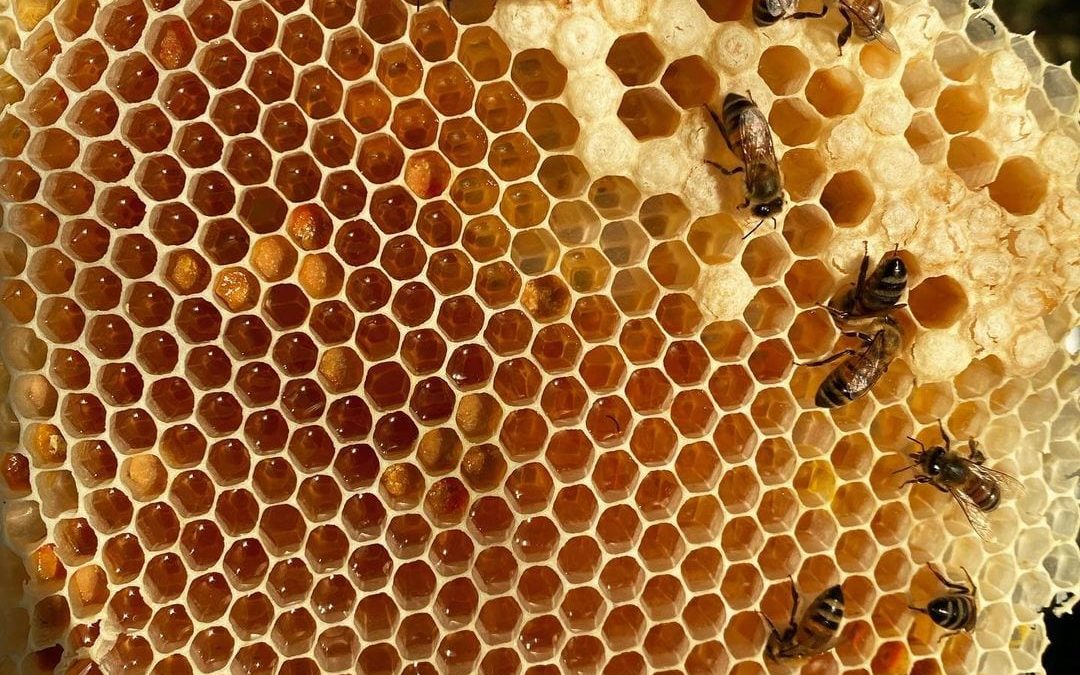When people hear the word bees, they automatically think about honey. There are more useful products in a beehive that the bees produce in addition to honey. These include propolis, royal jelly, beeswax and pollen.
Honey
Honey is made from the nectar collected by bees from flowers. The composition of the nectar is altered due to enzymes present in the crop (extra stomach) of the bees which stores nectar before it is deposited at the hive. After delivery to the hive, extra water is removed from the deposited nectar by bees fanning the honeycomb with their wings to facilitate evaporation. After this stage is achieved the resulting honey in the comb is sealed with beeswax.
Apart from its use as a sweetener, honey has been known to have several medicinal properties. The ingredients of honey have been reported to exert antioxidant, antimicrobial, anti-inflammatory, antiproliferative, anticancer, and antimetastatic effects. It has been used in the control and treatment of wounds, diabetes mellitus, cancer, asthma, and also cardiovascular, neurological, and gastrointestinal diseases.
Propolis
When bees forage for nectar and pollen they also collect substances from parts of plants, buds and exudates. These are mixed with bee-released compounds to produce a resin-like substance. Bees use this to seal any unwanted small gaps/crevices in the hive to form a protective barrier against external invaders (e.g. lizards) and also against the natural elements like wind or rain. Raw propolis is composed of approximately 50% resins, 30% waxes, 10% essential oils, 5% pollen and 5% other organic compounds.
Propolis has antibacterial, antiviral, anti-inflammatory and antioxidant properties and has been used since ancient times as a natural remedy for various disease conditions. Propolis It has been used in human and veterinary medicine, pharmacology and cosmetics.
Royal Jelly
This is the white and viscous jelly-like substance produced by the hypopharyngeal and mandibular salivary glands of young nurse bees. It is fed to all immature bee larvae from hatching to day 3, and is the exclusive food for the queen bee for the rest of her life. This allows the queen to have a longer life span than the other bees in the hive.
It is used widely as a dietary nutritional complex to combat various chronic health conditions. Anti-bacterial, anti-tumour, anti-allergy, anti-inflammatory, antioxidant, neuroprotective and immunomodulatory effects have also been attributed to it. Studies have shown that royal jelly may be helpful in reproductive care, neurodegenerative and aging diseases and wound healing.
Beeswax
This is the natural wax produced by honeybees. It is secreted by wax glands in the abdomen of worker bees. The bees use this wax along with propolis and pollen to construct their honeycombs. It is commonly used in cosmetics and body products, as well as in the food industry (as a film wrap for foods as well as a food additive to give shine to products). Apart from this, beeswax has been found to have therapeutic effects, including being effective in healing bruises, inflammation and burns. It has also been shown to have some antibacterial and antifungal properties.
Other non-therapeutic uses for beeswax include making candles and as a furniture polish.
Pollen
Foraging bees collect pollen from plants, which is brought back to the hive where it is mixed with saliva and packed in honey comb cells, where it is then covered with a thin layer of honey and wax. This creates what is known as bee bread which constitutes the basic protein source for bees in a hive.
Bee pollen is a valuable apitherapeutic product because of its potential medical and nutritional applications. Bee pollen is a rich source of fatty acids, essential amino acids, vitamins and microelements.
It demonstrates a wide range of properties including antifungal, antimicrobial, antiviral, anti-inflammatory, hepatoprotective, anti-tumor and has also been found to aid in the healing process of burn wounds.


Recent Comments